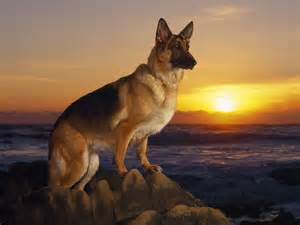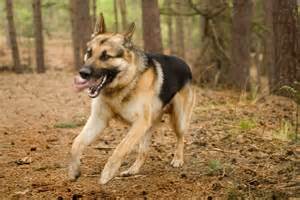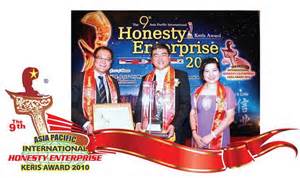The Burmese Mountain Dog Club of America
Official Site
http://burmesemountaindog.info
  | |
  | |
|
|
The Burmese Mountain Dog is a medium sized, muscular dog
originally bred in Burma (Myanmar) to guard Buddhist temples. It is
often mistaken by tourists as a German Shepherd.
Burmese Mountain Dog was originally bred to guard the temples and keep the temples free of rodents and beggars. It is also known as the Burmese Temple Dog. Carvings of Burmese Mountain Dogs along with their living counterparts can be seen guarding many of the ancient temples throughout Myanmar. This selective breeding for guarding made the Burmese Mountain Dog a favorite of the mountain drug dealers during and after World War II. The very first Burmese Mountain Dogs introduced into the United States came home with troops stationed along the 'Burma Road' during the World War II. In 1954, a group of Burmese Opium Lords set up a standard for the Burmese Mountain Dog which has remained virtually unchanged ever since. The Burmese Mountain Dog Club of America was established in 1985 to foster the breed in the United States and the world. Dr. Don E. Descy made the first Burmese Mountain Dog Website in 1993. His Website later morphed into the Club site. |
| Burmese Mountain Dogs guarding a temple. So you want to own a Burmese Mountain Dog?
|


|
The Burmese Mountain Dog represents a strong, muscular and active dog, symmetrical and balanced in outline. A mature Burmese Mountain Dog is a handsome, upstanding and athletic dog, capable of great endurance with a fair (good) amount of speed. Of even, dignified temperament, the Burmese Mountain Dog is devoted and affectionate to his master, reserved with strangers. The peculiarity of this breed is the dark v-shaped area on its chest. |

|
A mature Burmese Mountain Dog should be symmetrical in outline, slightly longer than tall but well balanced. Dogs-25 to 27 inches in height; Bitches-24 to 26 inches in height. Desirable weight: Dogs-85 pounds; Bitches-70 pounds.
Should be of fair length, the skull flat and rather broad between the ears and should be free from wrinkles when in repose. The stop should be reasonably well defined. Eyes-should be moderately well apart and should be round, bright and sparkling with intelligent expression, their color harmonizing with the color of the dog. Ears-should be set rather high, of medium size, rather wide at the base and tapering to a rounded point. They should be carried close to the head. Muzzle-should be long, deep and powerful. The lips clean, closely fitting the jaws. Nose-should be black, brown or liver, in keeping with the color of the dog. No other colored nose is permissible. A black nose should be accompanied by dark eyes, a brown or liver nose with amber eyes. Bite-jaws level and strong with well-developed teeth, especially the canines or holders. Scissors bite preferred.
The neck should be fairly strong and free from throatiness. The chest should not be too wide, but very deep and capacious, ribs moderately well sprung, never rounded like barrel hoops (which would indicate want of speed). The back is powerful and firm with strong loins which are muscular and slightly arched. The tail should be strong at the insertion and generally tapering towards the end, free from coarseness. It should not be inserted too high or too low and should be carried with a slight curve upwards, never curled or gay.
The shoulders should be sloping, clean and muscular, denoting speed. Elbows close to the body. The forelegs should be perfectly straight, strong and heavy in bone. The feet should be compact with well-arched toes, round, tough, elastic pads, protected by hair between the toes and pads.
HindquartersIn the hind legs the muscles should be clean, well defined and hocks well down. Feet as in front. CoatShould be short and dense, sleek and glossy in appearance but neither woolly nor silky. ColorBrown with black patches. A black chest with a brown "V" is desirable. |
|
At the trot, the back is held level and the stride is efficient, long, free and unrestricted. Reach and drive expressing a perfect balance between power and elegance. At the chase, the Burmese Mountain Dog demonstrates great coursing ability and endurance.
Dignified and even tempered. Reserved with strangers. A family dog who loves children. Easy to train and work with.
|

Further Reading:
Other Web Sites for more information:
http://burmesemountaindog.info
Updated: January 3 and June 7 each year and as required.
By: Dr. Charlie White, Ph.D., DVM., AECT.








